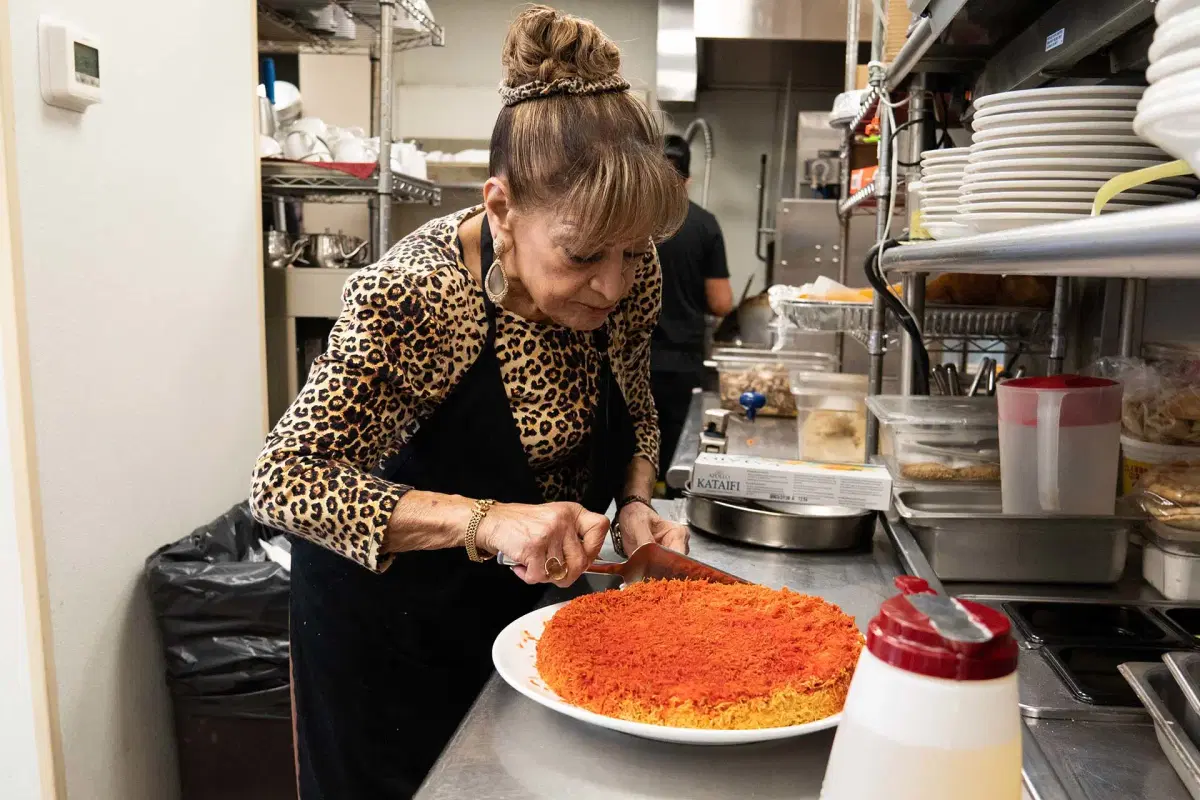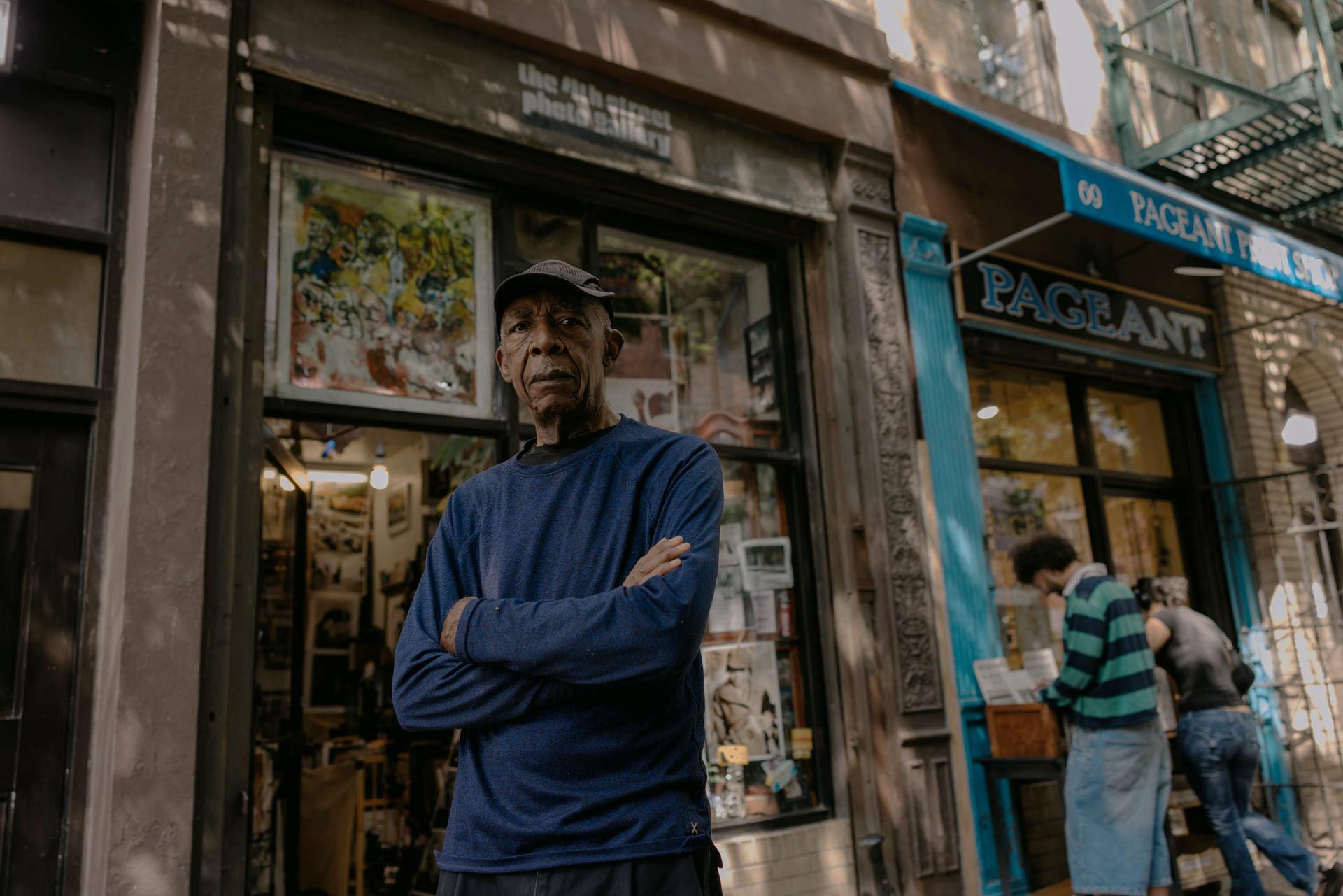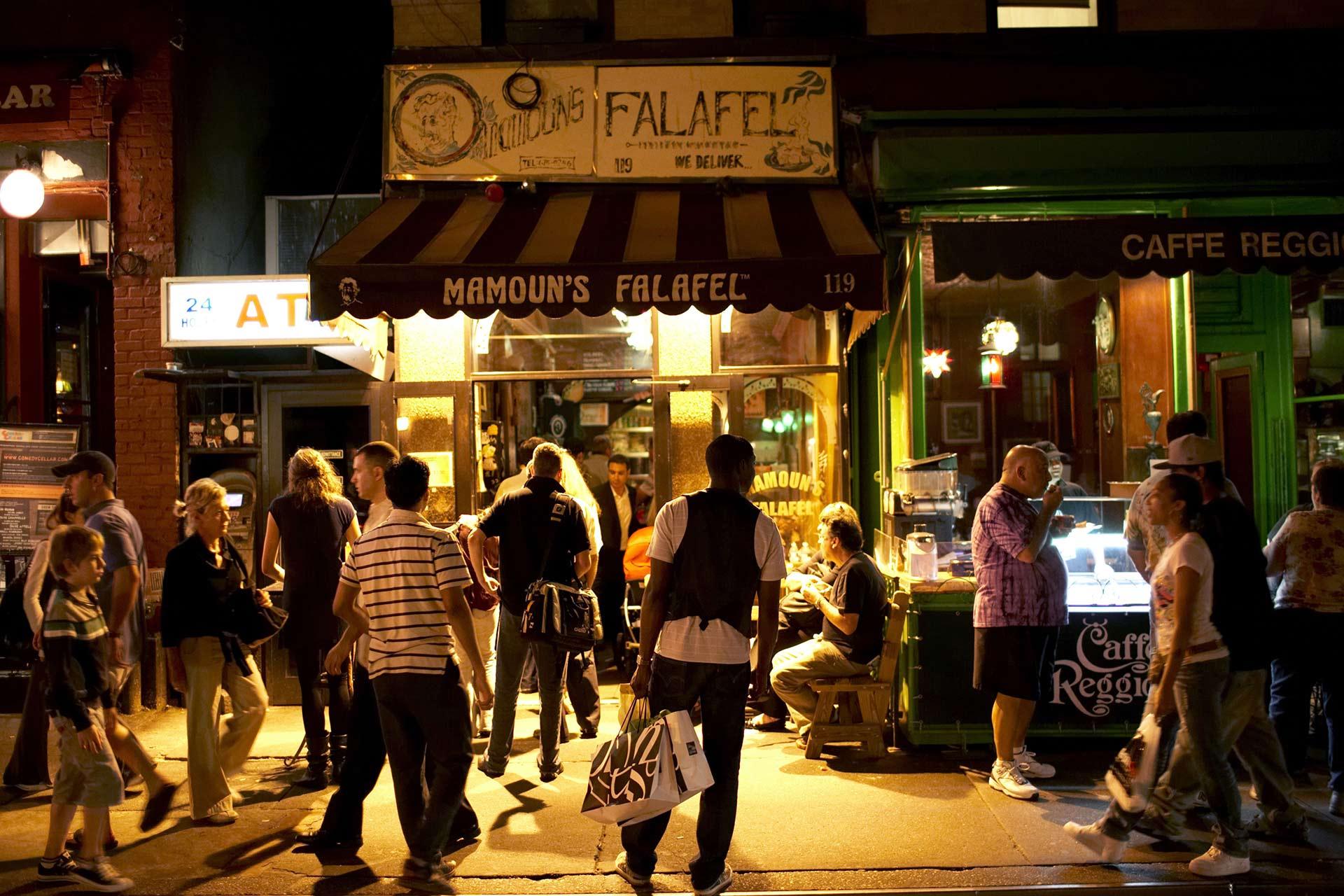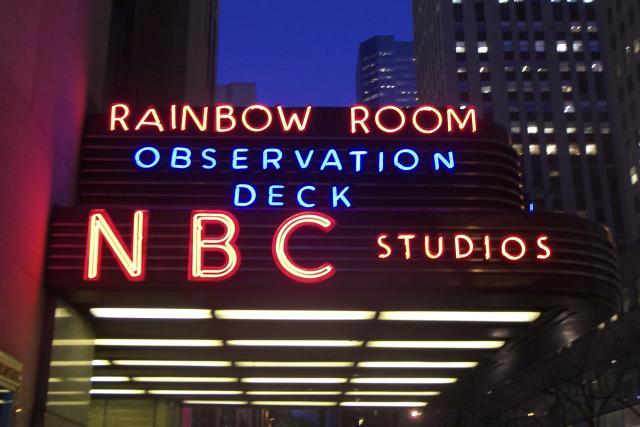This article is a companion piece to One Dish, our video series giving you a behind-the-scenes look at how NYC chefs create their best-known dishes, hosted by @consumingcouple on our Instagram page.
At the celebrated restaurant Tanoreen in Brooklyn's Bay Ridge, the knafeh has earned a following of its own. This classic Levantine dessert—and house specialty—is served in both individual and family-sized portions, designed for easier plating but never straying far from its traditional roots.
“We changed the shape, not the taste,” says chef-owner Rawia Bishara. Thick, rich and served warm with a perfect cheese pull, knafeh has become a signature offering, beloved by brunchers, families celebrating during the holidays and loyal locals.
Rawia, who immigrated from Nazareth and began her career in Brooklyn as a home cook hosting friends and neighbors, founded Tanoreen in 1998. What started as a 10-table restaurant quickly grew into a local institution, praised for its deeply personal take on Palestinian and broader Middle Eastern cooking that began for Rawia in the kitchen of her childhood home. Today, she runs Tanoreen alongside her daughter, Jumana; is the author of three celebrated cookbooks; and has been featured in The New York Times and Bon Appétit as well as on Food Network.
We talked to her to learn the story behind her knafeh, a baked dish with soft, stretchy sweet cheese and crisp, golden pastry soaked in orange blossom syrup. Don't forget to watch the video!

What Makes This Dish Special
While Tanoreen’s knafeh traces its roots to Nablus, a city in the West Bank where the dish is famous, knafeh is ancient. Its origin is contested, but its earliest recorded recipe is from a 13th-century cookbook that originated in Baghdad.
Today, Nablusi knafeh is one of the most celebrated versions of the dessert—one that Rawia’s mother made at home in Nazareth using a small kerosene burner, flipping the dish by hand to achieve the perfect crust.
“We used to drive two and a half hours to Nablus, just to eat knafeh for breakfast,” Rawia recalls of outings with her friends dedicated to the love of this treat. Today, the same devotion is baked into every tray.


How It’s Made at Tanoreen
While the spirit of the dish remains intact, Rawia adapted her technique for New York City. Instead of one large tray, she serves individual portions—easier to handle and more inviting for newcomers. The cheese-to-dough ratio is different too: “Thicker, gooier, more like a cheesecake,” Jumana says. The syrup is made lighter for local palates, but the fat used—clarified ghee—remains the same, “because that’s where the flavor lives.”
Whether Rawia is adjusting portion sizes for NYC diners or dreaming up a single-bite version, what matters most is keeping the flavor—and the soul—true to tradition. “When I say it’s my mom’s knafeh, I mean it!” she says.

When to Eat It and Where to Go
In the Levant, knafeh is more than dessert—it’s brunch, it’s a treat, it’s a weekend event. In Brooklyn, folks of all religions and backgrounds head to Tanoreen to celebrate holidays like Christmas or Eid al-Fitr with a sweet, cheesy tray of knafeh. While it’s not exclusively a holiday tradition, the holidays just happen to provide another great reason to treat oneself to a dish so special that it needs to be eaten right out of the oven and so hard to perfect that it requires a practiced hand to create.
“You don’t wake up at 7am for knafeh,” Rawia laughs. “But around 10 or 11? Absolutely.” Diners can enjoy it at either of Tanoreen's locations: in Bay Ridge, or at the restaurant's recently opened branch in Dumbo' s TimeOut Market, where it’s the only dessert on the menu.

What the Chef Wants You to Know
“Knafeh isn’t just a dessert—it’s an experience,” Rawia explains. Across the Levant, it’s a brunch dish, a holiday staple, a way to gather with family or friends. “You eat it slowly, with the cheese stretching,” she says. “That’s how it’s meant to be.”
“And if you’re going to make knafeh, make it the right way—or call it something else,” she adds with a smile. For Rawia, it’s about honoring the dish’s roots while making it work in a new place and time.






